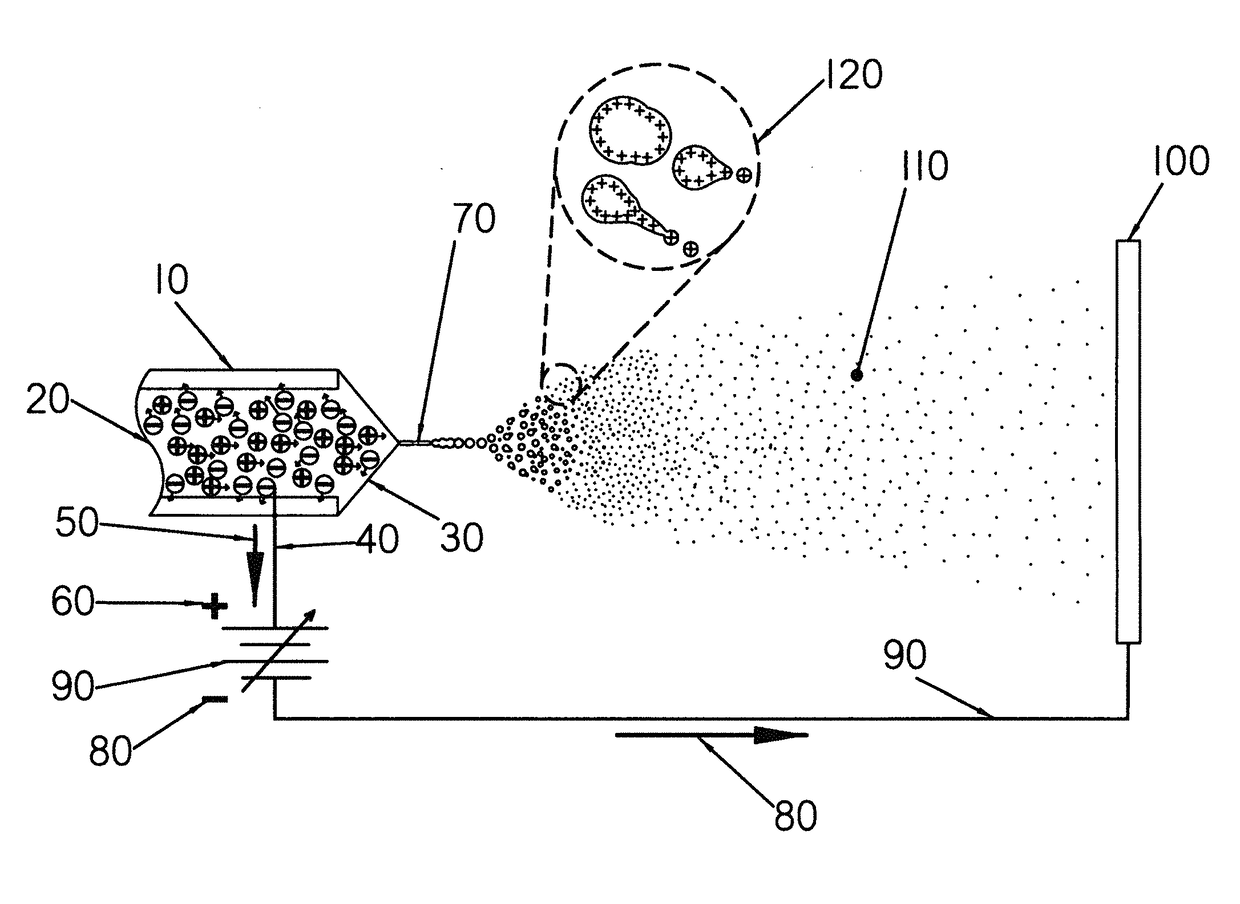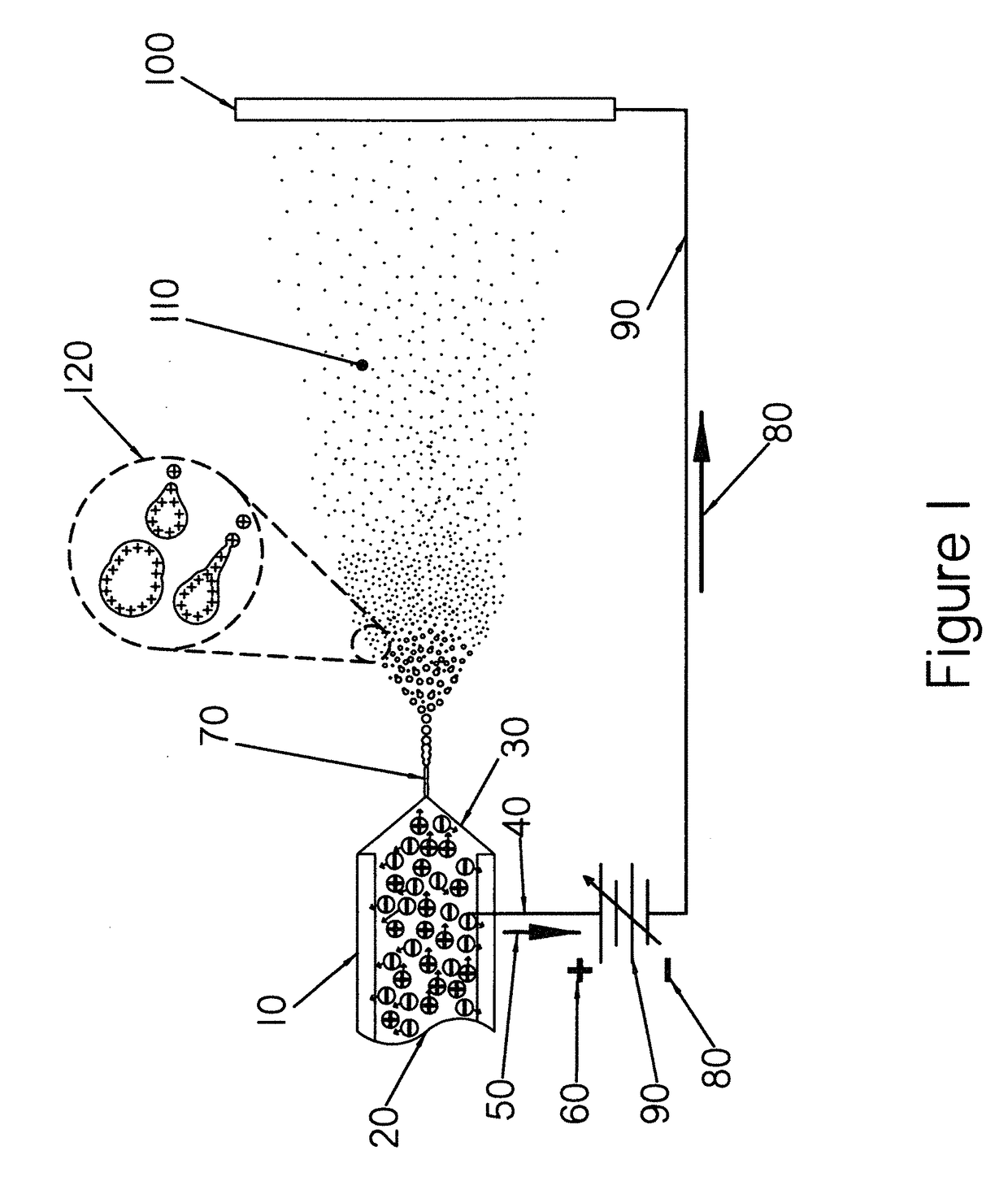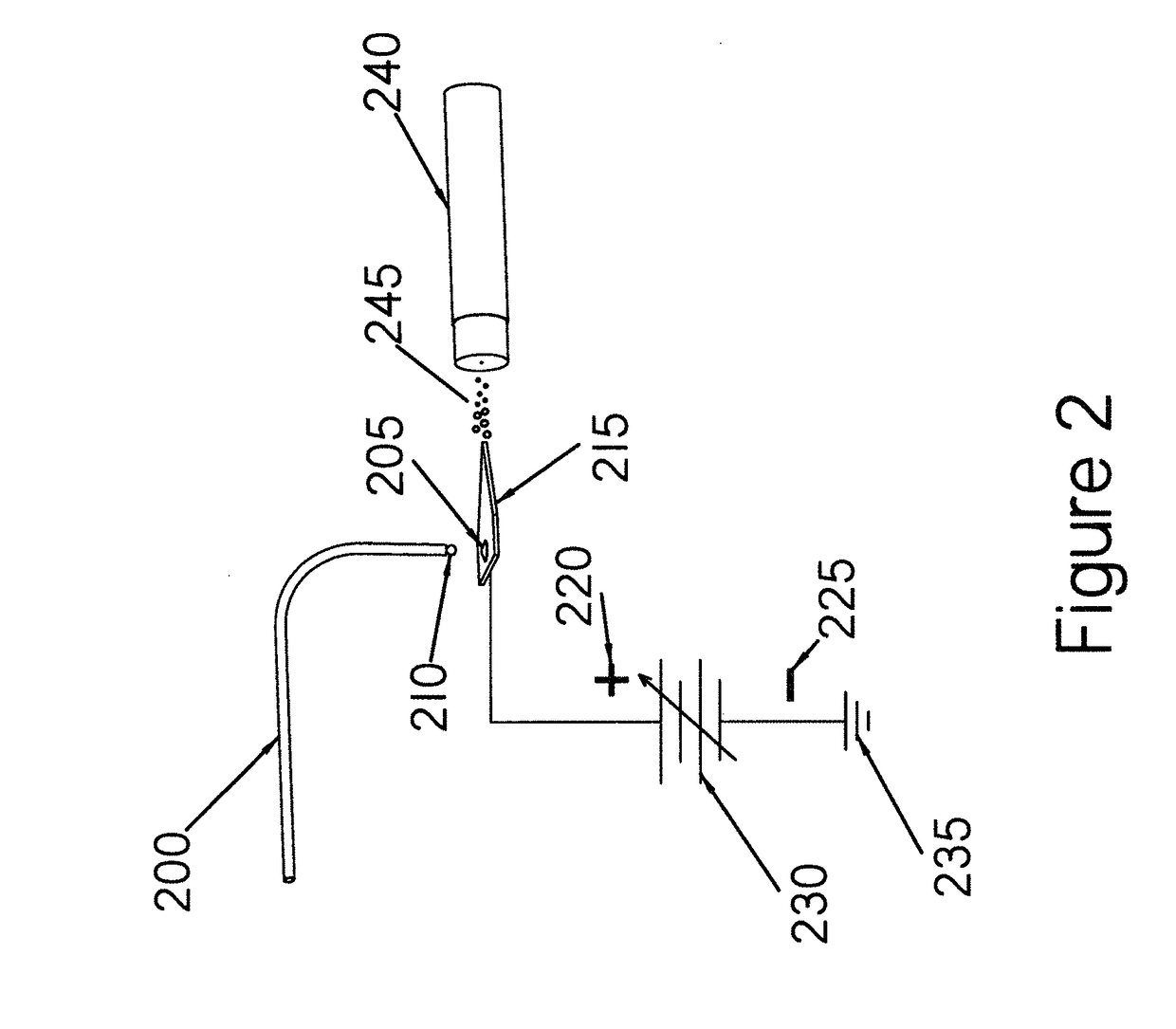Method of improved paper based mass spectrometry and novel wick support structures
a mass spectrometry and paper based technology, applied in the field of electrospray, can solve the problems of slow and laborious attachment of paper or other suitable media to the clip, clogging could be an issue, and the technology is not suited to large-scale drug and proteomic and other uses
- Summary
- Abstract
- Description
- Claims
- Application Information
AI Technical Summary
Benefits of technology
Problems solved by technology
Method used
Image
Examples
Embodiment Construction
[0013]The invention employs preferably a paper substrate upon which a dessicated analyte, preferably biological, has been deposited. The paper is cut to a sharp tip so as to create an electrical field concentration point, with an opposite end preferably cut square, allowing sufficient space between the tip and the square end to place preferably 1 ml of a preferably biological or forensic sample upon which can be dried. The paper is preferably long enough between the aforementioned dried sample and the tip and the square cut end to allow a support structure, preferably a conductive mesh, to be affixed. The mesh can be a conductive polymer, a polymer coated or treated to be conductive, or a conductive wire mesh screen. The wire mesh is preferably a 40 mesh, and is preferably stapled to the sample paper using preferably a chemically inert stainless steel staple. The screen is preferably wide enough that it can be in turn stapled to a surrounding support structure, in this case, prefera...
PUM
 Login to View More
Login to View More Abstract
Description
Claims
Application Information
 Login to View More
Login to View More - R&D
- Intellectual Property
- Life Sciences
- Materials
- Tech Scout
- Unparalleled Data Quality
- Higher Quality Content
- 60% Fewer Hallucinations
Browse by: Latest US Patents, China's latest patents, Technical Efficacy Thesaurus, Application Domain, Technology Topic, Popular Technical Reports.
© 2025 PatSnap. All rights reserved.Legal|Privacy policy|Modern Slavery Act Transparency Statement|Sitemap|About US| Contact US: help@patsnap.com



